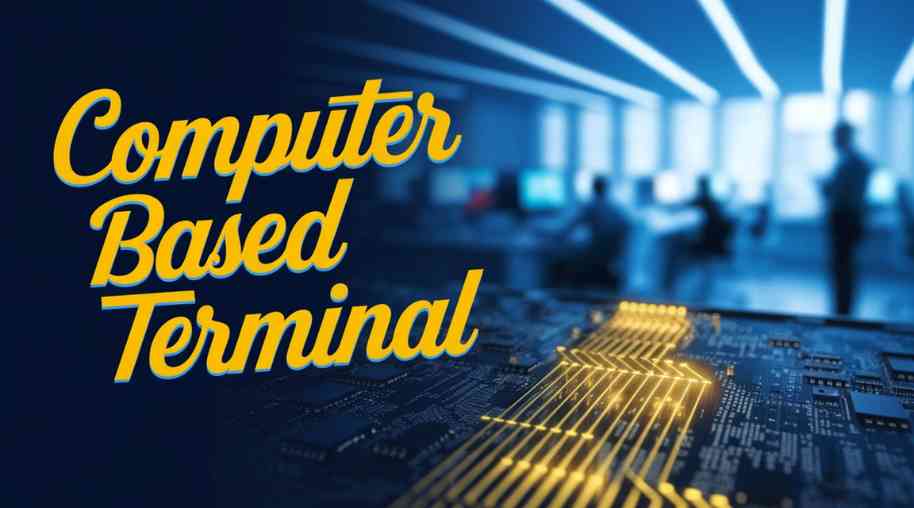CBT Full Form-Computer-Based Terminal
by Shashi Gaherwar
0 2040
Understanding Computer-Based Terminals: The Backbone of Modern Computing Systems
In computing, computer-based terminals are essential devices that enable users to interact with computers and access networked resources. Serving as critical interfaces, they facilitate data input, output, and communication within complex systems. From simple text-based devices to advanced systems, terminals have evolved to meet modern computing demands. This article explores their types, evolution, features, and significance in modern computing.

What Is a Computer-Based Terminal?
A computer-based terminal is a device that enables interaction with a computer or network for tasks like data entry and output. Historically linked to mainframe computers, terminals allowed remote access to centralized systems. Today, they connect to desktop computers, networks, or cloud environments, evolving from basic “dumb terminals” to sophisticated devices with enhanced capabilities.
Evolution of Computer-Based Terminals
The development of terminals reflects advancements in computing technology:
- Early Terminals: The Dumb Terminal Era: Basic “dumb terminals” like teletypewriters (TTY) relied on mainframes for processing, offering printed output. Later, video display terminals (VDTs) introduced screen-based interaction.
- The Rise of Intelligent Terminals: Equipped with memory and processing power, intelligent terminals handled local tasks, improving efficiency in networked systems.
- Personal Computers and Workstations: In the 1980s, PCs and workstations largely replaced terminals, though specialized terminals persisted in banking and retail.
- Modern-Day Terminals: Thin Clients and Cloud-Based Terminals: Thin clients and cloud-based terminals rely on remote servers, offering scalability and efficiency in cloud computing environments.
Types of Computer-Based Terminals
Terminals vary in complexity and application:
- Dumb Terminals: Basic devices for data entry or communication with mainframes, lacking local processing.
- Intelligent Terminals: Feature limited processing and memory for independent tasks.
- Thin Clients: Lightweight devices relying on cloud servers for processing, ideal for centralized enterprises.
- Point-of-Sale (POS) Terminals: Specialized for retail transactions, integrating with ERP systems for sales and inventory tracking.
- Virtual Terminals: Software-based solutions for accessing remote systems on devices like laptops or mobiles.
Key Features of Computer-Based Terminals
Modern terminals offer advanced functionalities:
- User Interface (UI): Ranges from text-based to graphical touch screens for efficient interaction.
- Connectivity: Supports Ethernet, Wi-Fi, and Bluetooth for seamless network access.
- Security: Includes encryption and authentication to protect sensitive data.
- Remote Access: Enables connection to cloud infrastructure or virtual resources.
- Multitasking: Allows simultaneous application use, boosting productivity.
The Role of Computer-Based Terminals in Various Industries
Terminals are integral across sectors:
- Retail and Point of Sale: POS terminals streamline transactions and manage inventory in real-time.
- Healthcare: Facilitate access to patient records and billing, enhancing care and efficiency.
- Banking and Financial Services: Power ATMs and core banking access for transaction processing.
- Manufacturing and Logistics: Support supply chain and inventory tracking for operational control.
Computer-based terminals have transformed from rudimentary devices to sophisticated tools, bridging users and computing resources. Vital in industries like retail, healthcare, and banking, they ensure efficient operations and data access. As technology advances, terminals will remain central to digital transformation, driving connectivity and productivity in modern computing systems.
Further Learning Resources
If you’re passionate about building a successful blogging website, check out this helpful guide at Coding Tag – How to Start a Successful Blog. It offers practical steps and expert tips to kickstart your blogging journey!
For dedicated UPSC exam preparation, we highly recommend visiting www.iasmania.com. It offers well-structured resources, current affairs, and subject-wise notes tailored specifically for aspirants. Start your journey today!

Share:








Comments
Waiting for your comments